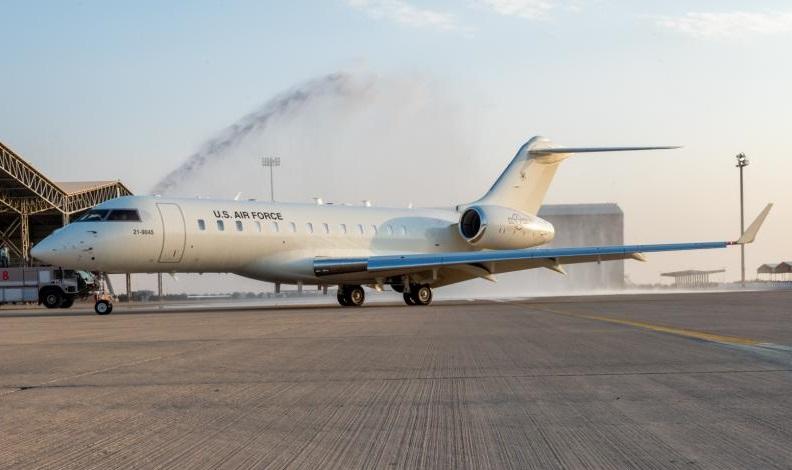For the 430th Expeditionary Electronic Communications Squadron (EECS) “Black Wolves,” delivering communication coverage to the American warfighter, the nation’s allies and coalition partners is a primary objective. The 430th EECS is the only unit in the U.S. Air Force that operates the E-11A aircraft with the Battlefield Airborne Communication Node or BACN payload. As such, the Black Wolves strive to provide consistent and effective communication channels for air, ground and maritime forces in the U.S. Central Command area of responsibility. To help keep the 430th’s fleet airborne projecting constant combat communications support, the Air Force and Air Combat Command procured a brand-new E-11A, which arrived at Prince Sultan Air Base, Saudi Arabia on Dec. 16, 2022.
“The 430th supports warfighters who conduct around the clock operations in the CENTCOM AOR. We supply communication coverage to ground and air forces in active combat zones, who require consistent, clear communications to higher levels of leadership and other command and control assets. This new E-11A will relieve the pressure on the rest of our fleet and enable us to sustain a high mission capable rate. Having an additional aircraft will give our maintenance team another option to reliably put combat airpower into the skies. The Air Force and U.S. Congress have recognized what the E-11A platform brings to the fight. As a result, we are standing up a new squadron of E-11s at Robins AFB in February of 2023,” said Lt. Col. Todd Arthur, the 430th EECS commander.

Essentially functioning as a low earth satellite, or “Wi-Fi in the sky,” the E-11A is used to provide extended aerial command and control capabilities to air assets and troops on the ground. The E-11A is the only aircraft of its kind in the Air Force, and all of the pilots with the 430th EECS are all volunteers from other airframes. Since the BACN mission’s inception in 2008, the 430th has consistently delivered thousands annual flight hours and proven to be an essential component to modern war fighting. With the high mission success rates, the E-11A has demonstrated in the Middle East, and the strategic capability advantages the aircraft brings to the joint force, the Air Force has announced plans to bring a new E-11A BACN squadron to Robins Air Force Base, Georgia.
As the only E-11A BACN squadron, the 430th EECS will play a key role in helping the Air Force establish a more traditional model with one home station squadron and a deployed squadron. The 430th EECS is a unique team with a unique mission set, and he noted that it has been a truly rewarding experience to lead this squadron. The Battlefield Airborne Communications Node (BACN) is an U.S. Air Force airborne communications relay and gateway system carried by the unmanned EQ-4B and the manned Bombardier E-11A aircraft. BACN enables real-time information flow across the battlespace between similar and dissimilar tactical data link and voice systems through relay, bridging, and data translation in line-of-sight and beyond-line-of-sight situations. Its ability to translate between dissimilar communications systems allows them to interoperate without modification.












